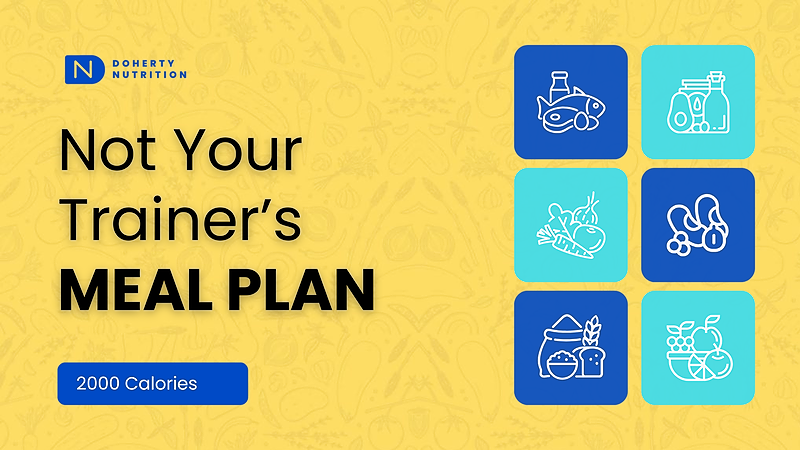One of the key principles of intuitive eating is to honor your hunger. However, that may be easier said than done. Maybe you’ve lost touch with your body’s hunger cues after years of yo-yo dieting, or you often snack without being hungry. Perhaps you consistently crave something sweet after dinner.
That’s why it’s essential to understand the different types of hunger. By identifying whether you’re experiencing biological, mental, or practical hunger, you’ll feel better equipped to honor your true needs, make more conscious choices, and develop greater self-awareness.
What Is Hunger?
Hunger is your body’s way of signaling that it needs food. Your mind also influences your motivation to eat. Although hunger is not an emotion, it is affected by your feelings, thoughts, habits, and memories. These mental cues contribute to your appetite, which is your desire for food.
Understanding appetite versus hunger comes down to recognizing that appetite is primarily an emotional craving for food, whereas hunger is a biological need for sustenance. You get hungry when your body tells your brain your stomach is empty, leading to those familiar stomach growls. Your appetite, or desire to eat, is triggered by seeing or smelling something delicious, or even just by thinking about your favorite meal.
It’s possible to have an appetite even if you aren’t hungry, and vice versa. Your appetite causes you to continue eating, even when you feel full. It can also prevent you from eating when your body needs fuel, such as when you’re stressed or sick.
What Are the Different Kinds of Hunger?
There are three main types of hunger — biological, mental, and practical. Let’s look at each type’s unique characteristics and hunger signals.
1. Biological
Biological hunger is your body’s natural response to a need for nutrients and energy. Its signals can include:
- A feeling of emptiness in your stomach
- A gnawing pain in your stomach
- A rumbling stomach
- Physical weakness
- Headaches
Beyond these physical sensations, biological hunger can also affect your mental state. You might notice fatigue, difficulty concentrating, increased irritability, or that you’re thinking more about food.
Biological hunger is partly controlled by the hypothalamus, a part of your brain that communicates to your body when it’s time to refuel. Within the hypothalamus, hormones interact to manage sensations of hunger and fullness. Ghrelin signals that the stomach is empty by causing hunger pangs and stimulating your appetite, prompting you to eat. The longer it’s been since your last meal, the more ghrelin is produced, and the hungrier you’ll feel.
After receiving food, the body reduces ghrelin and releases leptin. This hormone tells the brain to stop eating by creating the feeling of fullness.
2. Mental
Mental hunger stems from your mind rather than your body’s physical needs. It’s driven by things like emotions, thoughts, and memories. Taste hunger is a type of mental hunger and is triggered by your senses — the smell, sight, or taste of food. It often manifests as a desire for a specific type of food, such as wanting a pizza after seeing an ad on social media.
A clear sign that you’re experiencing taste hunger is having cravings for a certain flavor, even when you aren’t physically hungry. Habits and learned associations tend to play a key role. For example, if you habitually have a sweet treat after dinner, your brain may associate this time of day with the desire for something sweet. Likewise, you might automatically want popcorn at the movies, even if you’re full, as you’ve learned to connect the two.
Another type of mental hunger is emotional hunger. Even though you may be physically full, your motivation to eat is based on an emotional need. For example, you may use food as a tool to cope with stress, soothe feelings of sadness, relieve boredom, or even amplify feelings of happiness. Key characteristics of emotional hunger include sudden cravings and a strong desire for comfort foods.
While it can be hard to distinguish between brain hunger versus stomach hunger, you can tell them apart by analyzing the:

- Speed of onset: Mental hunger comes on quickly, as it is a response to external stimuli or internal emotions. As biological hunger relies on the gradual emptying of your stomach, it has a slower onset.
- Time of your last meal: If you’ve eaten recently, you’re probably experiencing mental hunger. If it’s been a few hours since your last meal, it’s more likely stomach hunger.
- Origin of your hunger: With biological hunger, you’ll often feel a physical sensation in your stomach. In contrast, mental hunger originates in your mind — you’re thinking about or craving a particular food.
- Underlying need: When you’re experiencing mental hunger, you might be looking for comfort or security, or to experience a specific taste or texture. However, with stomach hunger, your main goal is simply to feel satiated or full.
3. Practical
Practical hunger is less about an immediate need or desire and more about planning for when you will be hungry and might not have a chance to eat. The following signs indicate that you might be eating for practical reasons:
- Scheduled eating: You aren’t hungry, but you eat because it’s a specific time of the day, such as lunchtime.
- Preemptive eating: You have a meal before an activity, such as a meeting or a commute, despite low hunger levels.
- Convenience-based eating: You eat something readily available, as you won’t have time to prepare food later.
- Eating during illness or low appetite: You eat small, nutrient-dense foods to maintain energy and strength even when your appetite is reduced, such as during illness, recovery, or fatigue.
Our routines often dictate when we eat, regardless of hunger. As a result, key drivers of practice hunger include avoiding future hunger and knowing you won’t have access to food. For example, you might have a snack before a long meeting to ensure your stomach doesn’t start grumbling halfway through. Or, you have lunch during your set break, as you won’t be able to eat again for a couple of hours.
How to Manage the Different Kinds of Hunger
Regarding intuitive eating, it’s crucial to acknowledge that all types of hunger are valid. It’s OK to eat when you aren’t physically hungry, but because you’re craving something salty or want to celebrate a special occasion with a decadent dessert. Eating proactively is also completely normal and even beneficial.
However, challenges can arise when taste and emotional hunger override your body’s fullness signals, resulting in overeating and feeling uncomfortably full. Another potential issue is when convenience-based eating prevents you from following a balanced meal pattern that promotes overall well-being. Doing so can help you avoid feeling ravenous and make more nourishing choices.
Fostering a healthy relationship with food and eating intuitively is about learning to nourish yourself and getting in tune with your hunger and fullness cues. This way, you can realistically respond to hunger while enjoying all food types and providing your body with the fuel it needs. Here are some tips for managing the different kinds of hunger:
- Satisfy your biological hunger cues: First, determine whether you’re experiencing emotional or physical hunger to respond effectively. This may not be immediately obvious, so consider when you last ate and where you feel your hunger. If you’re experiencing physical sensations like hunger pangs, honor your body’s signals and eat something. Skipping meals can lead to stronger cravings and excessive hunger.
- Implement strategies for mental hunger: Hunger always signifies an unmet need, whether physiologically or psychologically. Rather than suppressing it, satisfy your emotional hunger by managing stress, building positive connections, and coping with emotions through journaling, meditation, or exercise. Addressing taste hunger means either indulging in your cravings or holding off until later. Reminding yourself that more enjoyable foods are ahead can lessen the urgency to fulfill every instance of taste hunger.
- Recognize when you’re full: Fullness is your body’s signal that it’s satisfied and doesn’t need more food. While this can feel different for everyone, common signs of satiety include feeling pleasantly full in your stomach and noticing decreased hunger cues. Developing awareness of your satiety cues requires patience and practice. Be kind to yourself as you work toward becoming more intuitive with your eating patterns.
- Practice mindful eating: Take your time by thoroughly chewing your food and savoring each bite. A mindful approach can help you become more aware of your body’s fullness signals and avoid overeating and undereating.
Improve Your Relationship With Food With Doherty Nutrition












































